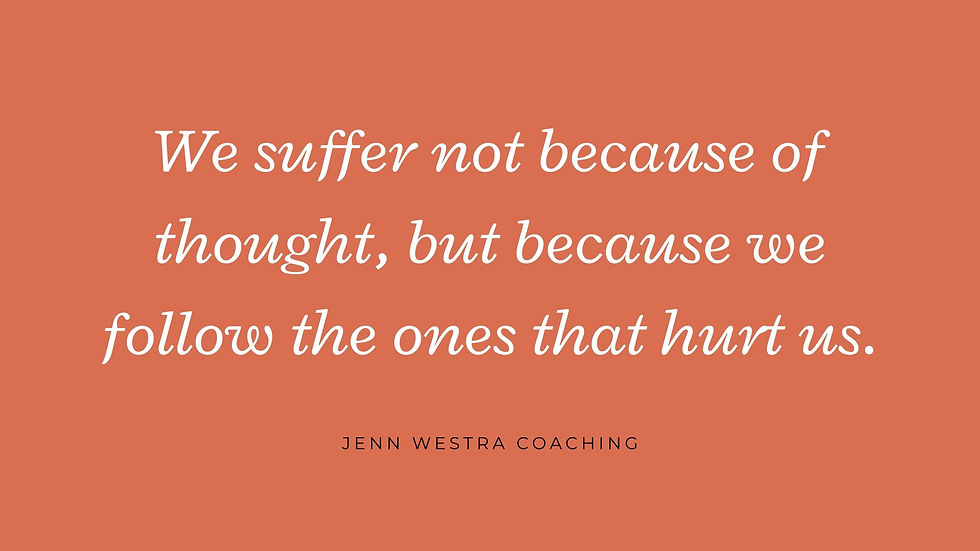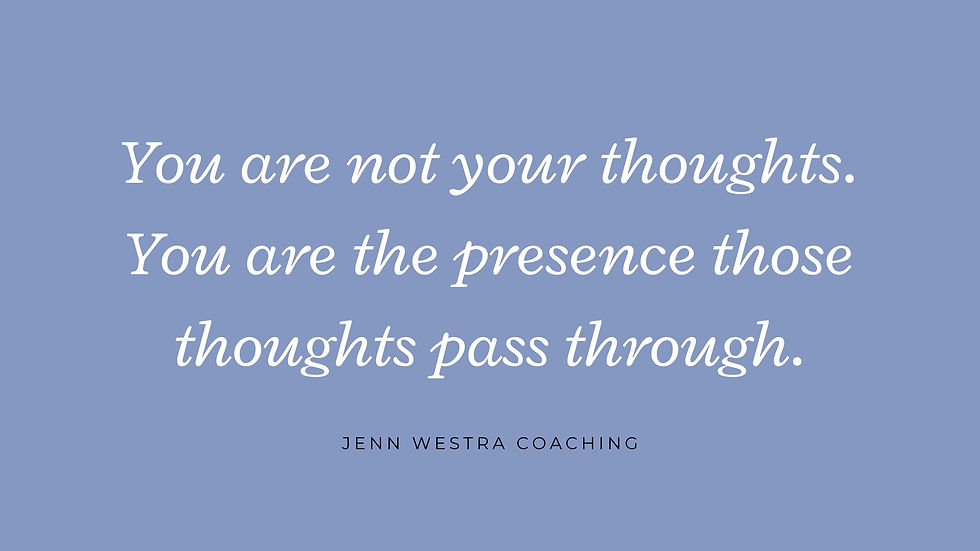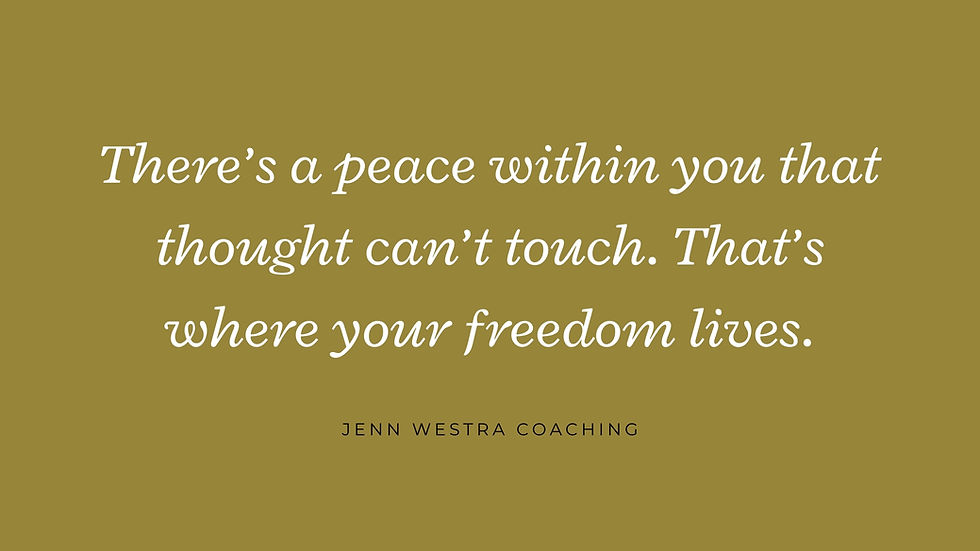It’s Not About Changing Your Thoughts—It’s About Feeling Which Ones to Trust
- Jennifer Westra
- Aug 31
- 3 min read

It’s Not About Changing Your Thoughts—It’s About Feeling Which Ones to Trust
There’s a common misunderstanding in the world of personal growth: that peace and clarity come from changing your thoughts. That if you just thought more positively, more productively, more kindly, then your life would improve.
But that’s not it.
It’s not about controlling your thinking. It’s not about forcing yourself to be positive. It’s about something far more natural and intuitive.
It’s about developing a feeling for which thoughts are useful—and which ones are not.
Thought Isn’t the Problem—It’s the Engagement
We all have a constant stream of thought flowing through our minds. Some of it is light and expansive. Some of it is dark and heavy. Some is brilliant. Some is garbage. But none of it is inherently good or bad—it’s all just thought.
The suffering comes not from what passes through your mind, but from what you engage with.
And that’s where the filter comes in. Not a mental filter, but a feeling filter.
When you start to tune into the feeling of your thoughts, something incredible happens: you begin to discern, almost instinctively, which thoughts are worth listening to—and which are best left alone.
Everything Is a Feeling
This understanding isn’t cognitive—it’s sensory. It’s felt. Everything in this space of insight and inner wisdom begins with noticing how a thought feels.
And we all know the difference:
You know the feeling of anxious thoughts—the tightness, the spinning, the urgency.
You know the feeling of scary thoughts—the dread, the narrowing, the sense of doom.
You also know the feeling of loving thoughts—the warmth, the openness, the depth.
You know the feeling of possibility—the lightness, the creativity, the energy it brings.
These aren’t abstract ideas. They’re real, embodied experiences. And they come from the quality of the thought you’re in at any given moment.
Once you start to see that, you stop trying to manage or fix your thoughts—and instead, you begin to listen to the feeling.
Your Common Sense Will Take It from There
You don’t need a technique to sort your thoughts. You already have something far more powerful: common sense guided by feeling.
When you’re in the feeling of goodwill, clarity, or peace, your common sense kicks in. You naturally listen to the thoughts that care for you. You naturally let the anxious or judgmental thoughts float by.
It’s not about doing it perfectly. It’s about recognizing when you’re off and remembering, Oh, this thought doesn’t feel helpful. I don’t need to follow it.
From that space, new thought arises—thought that supports you, motivates you, guides you gently forward.
One Direction Contracts You. The Other Expands You.
There are two general directions your thinking can take you.
One way—fear, judgment, comparison, control—closes your mind. It creates tightness, dissatisfaction, urgency. It makes the world seem small and life feel hard. It convinces you that you’re not okay.
The other way—curiosity, possibility, compassion, love—opens your mind. It brings clarity. It creates space. It inspires creativity, resilience, and action. It shows you how deeply okay you already are.
And here’s the beauty of it: you already know the difference.
You’ve felt both. You know which one uplifts you and which one drags you down. This isn’t something you have to learn—only something you have to notice.
When you start choosing which thoughts to follow based on feeling—not content, not logic, not morality, but feeling—your whole experience of life begins to shift.




Comments